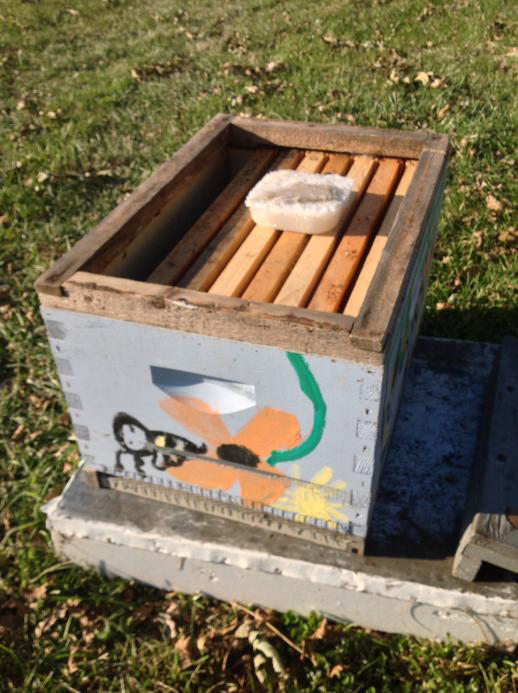![]()
December is usually a cold month and there isn't much we can do for the colonies. I've already made the necessary colony combinations so I don't have any weak hives going into the winter.If it turns too windy I may reduce the entrances even though they don't need it.
But when the wind is blowing hard I feel sorry for them. I remember well though, the time I made the mistake of closing the hive down too much and making the it too warm - lost some hives that way. There's something about the struggle which makes them stronger. Coddle them too much and we do just as much harm as when we don't help them at all. It's always a balancing act.

I've learned the hard way that checking on them can stress them until they are too weak to survive. There is little we can do for them at this time of year. It is too late to combine weak hives. Feeding syrup won't help (they couldn't utilize it even if we gave them gallons of it. It's too cold.). So checking on them when we can't do anything to help only disturbs them and causes them to waste precious energy. We do more damage than good. It is hard to leave them alone when I want to help them, somehow, some way. Sometimes, I want desperately to know how they're doing. But I MUST resist the urge to "just take a quick peek". I've learned to satisfy my curiosity by placing my ear to the side of the hive and listening for the hum of bees working to stay warm (be careful not to cause any vibrations to the hive or hive stand).
I've made the mistake of keeping liquid on the hives in the cold weather - bad news! Feeder bottles leak when the temperatures rise and fall. If the leak hits the cluster it will kill them. If not, the leak pools at the bottom of the hive which it not good either. I've learned to switch to solid foods in the cold weather. I use sugar blocks or, occasionally, dry sugar poured on top. The sugar blocks are less messy in my experience and the bees are less likely to just carry it out of the hive as trash. They HAVE to lick a sugar block, they can't carry it out as trash. This is also why pollen patties should be moist, otherwise they tend to carry the pollen sub out as trash instead of eating it. Read Randy Oliver's website about this (www.scientificbeekeeping.com). He also mentions it in his article in this month's Am. Bee Journal.
I've learned to add sugar cakes with a chunk of pollen patty buried in them for insurance. If they were set up well in the fall, they probably won't need it. However, it is a cheap insurance policy that they can reach food when needed. The rims/spacers I use allow me to place the sugar block right on the topbars so the cluster comes into direct contact with it as they move up. The sugar block is softened by the warm air from the cluster so it is easy for them to lick/eat it. This has the added benefit of helping control condensation as the sugar absorbs the moisture - a two-for! If they don't need it and don't use it, I can throw the cake into the syrup bucket next spring when I'm feeding splits and swarms!
I make sugar cakes by pouring dry sugar into Tupperware containers, adding water, and heating. Add just enough water to make it lumpy (usually less than 1/4 cup of water to 2 cups sugar). This is important. If there is too much water, the sugar never sets up into a cake - it stays liquid. The wet-ted mixture should be almost lumpy. Put the Tupperware in the microwave and heat it on high for about a minute. It will come out bubbly and very hot! Set the whole container on a counter and push a small piece of pollen patty into the bot-tom. Let it sit until cool. Then pop the sugar block out of the Tupperware like an ice cube! On a warm day, quickly pop the lid up and place this block on the topbars in the space the rim has created. Voila! Supplementary/emergency food source and condensation control!
I don't get much bee work done in December because I'm busy dancing, celebrating the holidays with family and friends and getting my "winter belly". December is a time to renew my subscriptions to BOTH bee magazines. Read some forums. Relax a little and breathe. Soon, January will find me feeling behind in my spring equipment preparations. I'll spend the next two months building and preparing enough boxes, lids, bottom boards, frames, and foundation to meet my ambitious plans to raise dozens of nucs and queens and push past that 200 hive mark! Oh, oh, oh, I almost forgot all the equipment upgrades I want to do, and the new designs I've been drafting in my head, and in the margins of my bee journals, and on napkins.......so many things to do! It's exciting!
I hope that sharing my mistakes and experiences will help you understand why these choices are necessary and will help the bees.